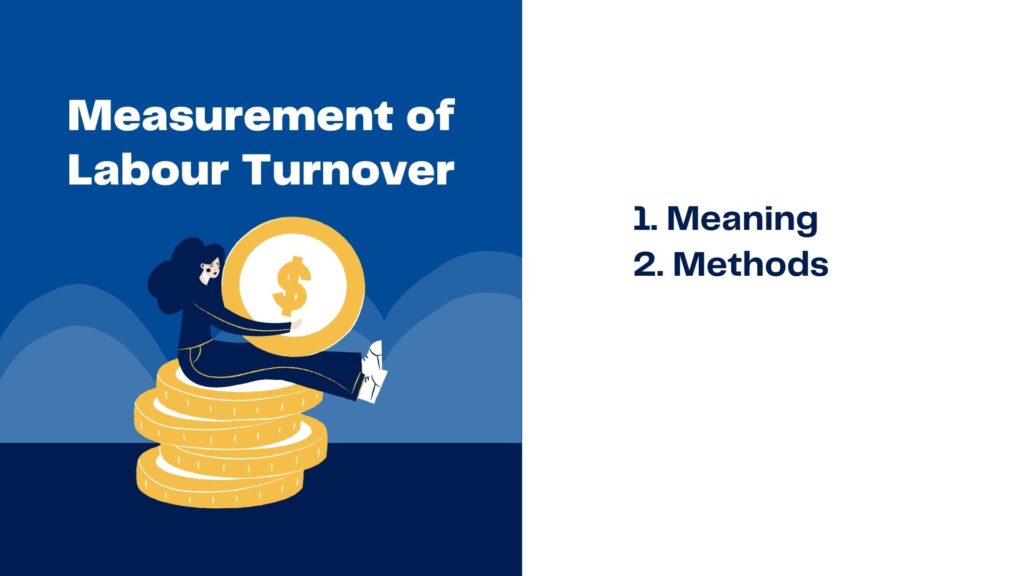Measurement of Labour Turnover (5 Methods) | Free Cost Accounting Articles
Table of Contents
Measurement of Labour Turnover

Meaning
Labour turnover in an organization is the rate of exchange in the composition of labour force during a specified period measured against a suitable index. It has perpetual existence. The working force in an organization does not remain constant. Some of the existing staff may leave, new people join the organization. This phenomenon is known as Labour Turnover.
- First in First out Method (FIFO)
- Last in First out Method (LIFO)
- Simple Average Method
- Weighted Average Method
Method of Measurement of Labour Turnover
There are different methods for the measurement of Labour turnover. The method of measuring the labour Turnover adopted by the firm depends upon the conception of Management and the definition of Labour turnover. Once the organization has adopted a particular method, then it should be consistently followed which enable comparisons of data from year to year.
Following are the methods of Labour Turnover adopted:
1) Separation Method
In this method, Labour turnover is considered as a relationship between total number of separations for a given period and the average number of workers on the payroll during the period.
Therefore,
Labour Turnover Rate
= Number of separations in a period /Average Number of workers during the period x 100
2) Replacement Method
This method is also known as the Net Turnover Method. Under this method, labour turnover is measured/considered as a relationship between the actual replacement of labour during the period and average number of workers during the period.
Labour Turnover Rate
= Number of Workers Replace in a Period/Average Number of workers in a Period ×100
3) Basis of Accession Method
Under this method, the experts view is considered logically to measure the labour turnover. It is a relationship between accessions and the average number of workers during the period.It is calculated as follows:
Labour Turnover Rate = Assessions /Average number of workers during the period x 100
4) Avoidable Separation Method
There is an argument made that in any organization certain amount of labour turnover is inevitable. The percentage of separation can be high due to some unavoidable circumstance or reasons. Eg. Sickness, old age, death, family conditions, seasonal and cyclical conditions or fluctuations in the business.
Therefore, separation should be avoidable and unavoidable. The Labour turnover is calculated by considering the relation of avoidable separation and average working force (workers) during the period.
Labour Turnover Rate
=Avoidable Separation in the period/Average working force workers during the period×100
5) Flux Method
Under this method, the separations and replacements for the period are considered for the calculation of Labour turnover. It is the relationship between the sum of separations and replacement during the period and Average Number of Workers during the period.
Labour Turnover Rate
= Separation + Replacement during the period/Average Number of Works during the period×100


